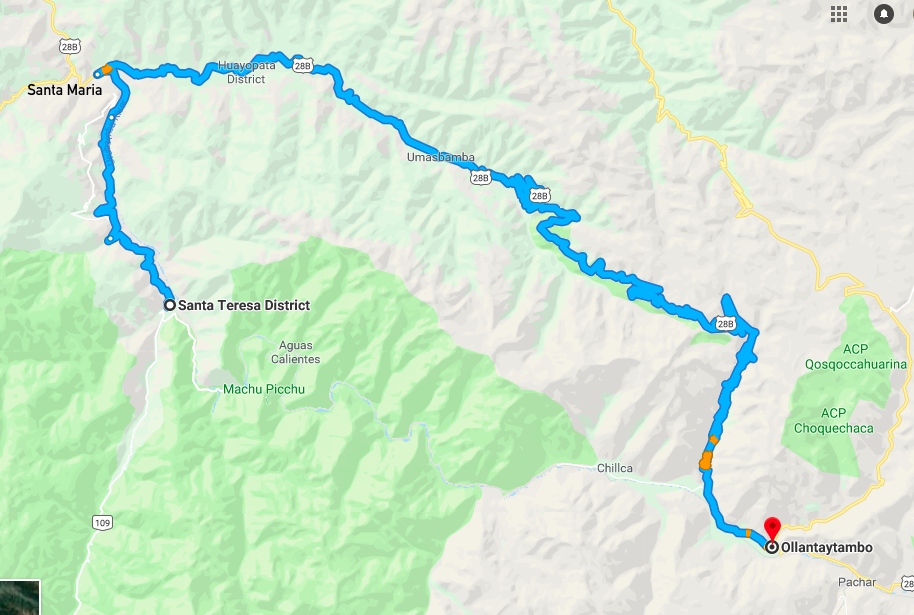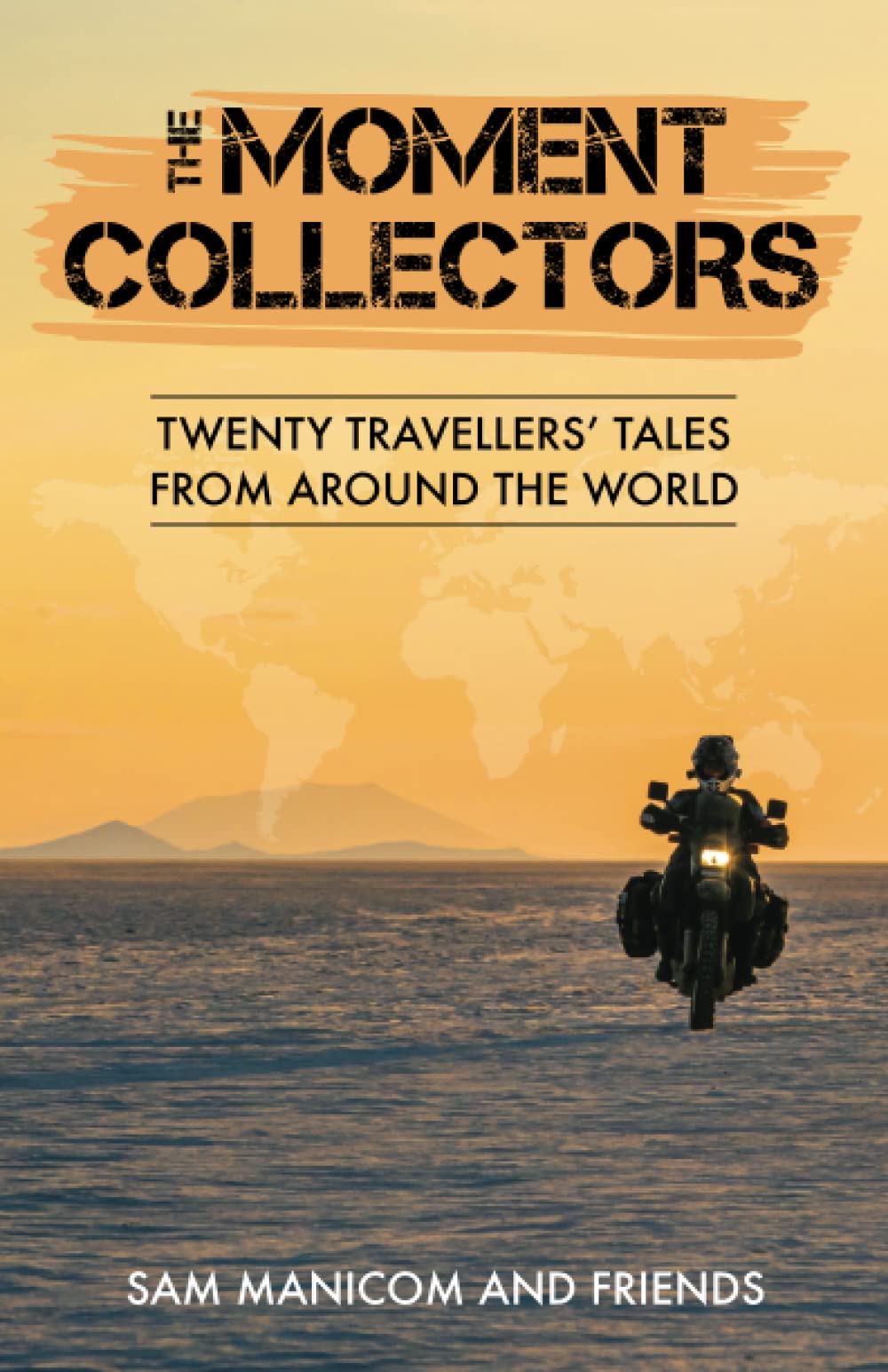By MarisaOne of the seven wonders of the world and rightfully so, the lost Incan city of Machu Picchu is on many people's bucket list. But as picturesque, breathtaking, and mysterious as it is, in recent years it has become a tourist hot-spot, and an expensive one. And I'm not just talking about the ticket price. The Peruvian government knows that they can get more than twice the ticket cost out of every visitor because Machu Picchu is inaccessible by road, which forces everyone to take overpriced train rides there (from Ollantaytambo it's $45 per person one way, from Cusco it's $75 one way!). For many people this is fine, as they have been saving up all year to spend a weekend in Peru seeing the sights, and the train is certainly the quickest and most comfortable way of getting to Machu Picchu. But for long-term travelers trying to keep to a budget, getting there can be such a headache and a dent in the wallet, that many are now missing it simply for the cost involved. And that is a real shame. There are no group of travelers who find this more frustrating than overlanders: people who travel from country to country via their own vehicle. We are used to driving up to places, finding a parking spot, and calling it home for the day. We wake up to gorgeous sunrises over empty tourist sites as everyone else is sleeping back at their hotels, and we can get to places that no bus or train could ever go. Unfortunately, this is not possible for Machu Picchu. In order to visit the site, we have to give up our vehicle, which is our home on wheels and is not something we do lightly. But the good news is that if you have a few days on your hands and are up for a hike, then there is a way to cut out the cost of the train rides. This is what Tim and I did, along with our fellow motorcycle friend Aditya. We didn't invent this route and there are plenty of others who take it every day, but it's a complicated process, so I wanted to lay out in detail how we managed. Hopefully this can help and inspire anyone else who wants to visit one of the most difficult to get to, but rewarding wonders of the world. Step 1: Drive to Santa TeresaSanta Teresa is the closest town to Machu Picchu that you can get to by road (Aguas Calientes, a.k.a. Machu Picchu Pueblo, is at the base of the site's mountain but has no road going to it). To get to Santa Teresa from Cusco, we decided to stop by all the Incan sites along the way before the grand finale of Machu Picchu (if you're interested, a detailed blog about our own paved version of the “Inca Trail" is here). The last real tourist outpost before Santa Teresa is Ollantaytambo, which is a lovely traditional Incan village with a set of ruins nearby, and also has a nice market. And since we knew things were going to get more expensive the closer we got to Machu Picchu, we bought three days' worth of food and supplies there before leaving. From Ollantaytambo the road was paved and fast, going up into fairly high altitudes with snow-capped mountains on either side. That high up, the weather turned cold and rainy on us, but soon we dropped thousands of feet in elevation until we were in the heat of the humid Amazonian region. There was a lot of putting on, and taking off, rain gear and layers that day. We hit the town of Santa Maria and turned our tires to Santa Teresa, where the asphalt became dirt. It's not that the dirt road was bad, it's that once it started winding narrowly along the sheer cliff edges with colectivo buses and local cars driving like madmen on the wrong side of the road (as usual), it felt a bit dangerous. We even saw a smashed car being towed up the cliff that had crashed way down in the valley. I'm not sure anyone who had been in that car could have made it out alive. But if you do survive this road, then you'll easily get from Ollantaytambo to Santa Teresa in the same day. Santa Teresa has been recently built up for tourists doing this same trainride-skipping route, and we rightly assumed that things there would be a little pricey. So we stayed at a recommended hotel where we knew there was secure motorcycle parking (Hospedaje Miel) and were easily able to talk the owner down to 20 Soles a person per night (~$6) and no charge for parking. Not too bad at all. Step 2: Get to HidroelectricaUnfortunately, this is where we said goodbye to our bikes, and took a colectivo car to a train station called Hidroelectrica for 5 Soles a person (~$1.50). That is the going rate, and to make things even easier, the hotel owner called up a colectivo to come and pick us up, but you can find them waiting around the town square as well. Colectivos are usually white taxis and vans that take people to places as a public service. But this means they may not leave until they fill up, and it can become a game of patience to see who will break first: either they'll leave without being full, or you'll pay for the empty seats. As motorcycle overlanders, we were not used to this game, and I found it frustrating, but we did our best to be patient. Our driver to Hidroelectrica was fine (I don't even want to talk about the driver back, he was a nightmare), but to save yourself the hassle, you can drive to Hidroelectrica yourself if you want. And if you have a car or RV-type setup that locks and is secure, you'll probably want to. But Hidroelectrica is a bustling parking lot with people coming in and out all day, and we did not feel comfortable leaving our bikes there. Step 3: Walk the Tracks to Aguas CalientesAs mentioned before, Machu Picchu and its nearby town of Aguas Calientes is only accessible by train. So since we decided we were not going to purchase expensive train tickets, that meant we had to walk the tracks instead. We reserved a day for this hike and I'm glad we did because it took us 4 hours to get from Hidroelectrica to Aguas Calientes (this included lots of rest stops, picture ops, and a lunch break). The tracks sloped slightly upwards the whole time, so getting there was a bit worse and coming back only took us 3 hours. Because of the gradual incline, it's not a difficult hike, but the loose railroad rocks get wearisome on the soles and ankles. Plus, it's definitely hot jungle out there. I got bit by mosquitoes and sand flies along the way, so dress appropriately and pack some bug spray. Amazingly, there are tons of other people hiking along the tracks as well (they either take buses to Santa Maria and then transfer to Hidroelectrica, or they get bused in to Hidroelectrica directly from their hostel). And there are even stores built beside the tracks, campgrounds, and restaurants selling burgers, cold beers, and ice cream! Some of what they're selling isn't all that expensive, so even though we packed everything we'd need, it's good to know we were never too far from affordable provisions. About every hour or so, the expensive train going to and from Santa Teresa would pass, which was a great opportunity to get some Peruvian Soles coins smashed on the tracks as souvenirs. The last bit of the hike turned away from the tracks and headed up to Aguas Calientes, and was the steepest part of the trek. Once in town, we walked along the thoroughfare until we found a cheap hostel for the night. No reservation was needed, but we came in the low season (Dec-Feb). Step 4: Buy Your TicketsIn the high season (June-Sep), it might be preferable to purchase your Machu Picchu tickets way ahead of time in Cusco or even online. There are also a couple of paid trails that you can buy with your ticket (Huayna Picchu Mountain and Machu Picchu Mountain), and these should be gotten early because they sell out quick. But because we were in the off season, we had no problems getting tickets the day before, and even those hikes which are normally sold out months in advance were available. The Machu Picchu ticket office in Aguas Calientes is open until 10 PM, and the cost was 152 Soles a person (~$45) without the extra hikes. Be warned, they were only taking cash in Soles when we went, and we had to each present our passport when purchasing the tickets. Finally, we headed over to the bus ticket office. To take the bus up to Machu Picchu or not to take the bus, that is the question! So there are buses that leave Aguas Calientes and bring you up to Machu Picchu or back down every 10 minutes all day long, starting at 5:30 AM. It takes about 25 minutes and costs $12 each way (you must buy these tickets the day before and only from Aguas Calientes at this office, closes at 9:00 PM). But there is also a trail that runs straight up the side of the mountain, and many people swear by the unforgettable experience of actually hiking up to Machu Picchu. Because I had recently hurt my foot in a fall, I knew I was taking the bus, at least for the ride up. But Tim and Aditya weren't sure which would get to Machu Picchu first, the hikers or the bus? Being at Machu Picchu for sunrise and before it got full of tour groups was extremely important to us. And even though the hike supposedly took an hour or more, hikers were allowed to start the climb a half hour earlier than the buses. And while they said the first bus would leave at 5:30, would we get on the first bus? And even if we did, would it really leave on time? After all, this is Peru. So what to do? Step 5: Get up the MountainIn the end, we decided to stick together and all take the bus up, but to save on costs, we'd walk back down. So after buying our tickets the night prior, we woke up at 4:00 AM, got into the bus line by 4:30 which had already started forming (it's first come, first serve), and were able to get onto the third bus out. And most amazingly, it actually left at 5:28 (most punctual thing in Peru!), and we were at Machu Picchu by the time the gates opened at 6:00. We ended up being very happy with this decision to take the bus up as we saw plenty of hikers along the road staring at us with forlorn expressions. Maybe they were simply catching their breath from the grueling hike, or maybe they just hated watching busloads of tourists beating them up there. But I'm pretty sure not a single hiker could have gotten up the mountain before the buses. That being said, if hiking up to Machu Picchu is your dream, then don't let me talk you out of it. Not only is it cheaper, but I'm sure it is much more rewarding and impactful to arrive via your own two feet. Some people say it was what made their time at Machu Picchu particularly special. Step 6: Enjoy!At the main gate, we checked in some baggage for 5 Soles (~$1.50), and showed our passports and tickets to get in (don't forget your passport!). This is also the only place with bathrooms in the park, and it costs 2 Soles (~$0.60). The women's line was of course super long, and I felt bad for them because they were all missing getting pictures of Machu Picchu at sunrise because they had to pee. Big duffle bags or backpacker packs are not allowed into the park, and many people were forced to check them in. But day backpacks seemed to be fine. And food, walking poles, and selfie sticks are technically not allowed either, but if it's hidden in your bag, you should have no problem. Once inside the gates, we were confronted with the postcard view of Machu Picchu that everyone loves. Thankfully, the Inca built terraces that are perfect selfie-taking platforms where everyone can all spread out and take pictures of the same view (well planned, Inca!). We climbed up to the House of the Guardian and the Funerary Rock to get some elevation for our shots, and it was as perfect as I could have ever hoped. After a few minutes, tendrils of mist and clouds started tickling the mountaintop of Huayna Picchu, and tumbling down the sides while the further mountains crowned the whole scene. It was mysterious, it was majestic, and most of all, I had the feeling that I had walked into another world, or stepped back in time. It was indescribable. Walking around Machu Picchu is actually a one-way circuit, and going backwards is forbidden. So plan your route ahead of time and where you need to be when, because it's hard to get back if you've missed something. There are two paid hikes that you have to buy with your ticket if you want to do them: Huayna Picchu and Machu Picchu Mountain, and then there are two free ones: Inca Bridge and Sun Gate. Huayna Picchu is the steep peak you see behind the ruins in every picture, and it's the most difficult hike in the park, usually taking many hours to complete. Machu Picchu Mountain is behind where everyone takes pictures, and it's not as strenuous, but offers fantastic views of the ruins below. I've heard the extra cost of these treks is 24 Soles each (~$7.50). For both of these you can choose when buying your tickets between going at 7:00 or 10:00. People have said good and bad things about both timings, but many people claim that it's too foggy at 7:00 AM to see anything on top of those peaks, so 10:00 may be better. Needless to say, because of my foot, we did not do either of these hikes. But we did go down the Inca Bridge Trail to what was a wooden drawbridge of sorts that the Inca could raise to make it difficult for anyone to invade (the actual bridge is closed off because it's dangerous, but you can see it from the path). The hike was lovely, and it was one of my favorite parts of Machu Picchu because there was almost no one there, the fog was rolling around us in clumps and gaps, and it was peaceful and silent, except for bird calls. The Inca Bridge walk was easy and magical, and it only took a half hour for us to complete. Afterwards, we made our way down through the ruins of Machu Picchu along with the rest of the tourists, which was starting to become more like a moving herd of people. If you can imagine that the route through Machu Picchu is shaped like an oval, then you are starting on the left side and you come back on the right. And they say to take your time through the left side because it is the ceremonial and temple side, whereas the right has only residential buildings. So that is precisely what we did. By the time we got to the residential side, we knew there wasn't much left to do, so we sat in a grassy house and ate a packed lunch while soaking in the fact that we were relaxing in the old house of some long gone Machu Picchu resident. Amazing. One of the last things on the route was the Temple of the Condor with a large condor sculpture on the ground (I needed to use my imagination a bit), and then we were out of the park. We made sure we didn't forget to have our passports stamped with the Machu Picchu stamp right as we exited. As we were leaving at 10:00, we noticed hoards of people coming in who had all probably taken the train from Cusco. Good thing we didn't do that! It seemed like midday was going to be a busy, jam-packed time at Machu Picchu. In total, we spent about four hours in the park and felt very satisfied with our time there. Those who do Huayna Picchu hikes and other trails might spend all day there. Step 7: Reverse it all back to Santa TeresaWe had completed our tour of Machu Picchu, but our day was far from over. This is because we were a little stressed for time, and had decided to hike down the mountain and then immediately back along the tracks to Hidroelectrica. So we got our bags out of the luggage check, and headed to the trail that zig-zagged down the mountain. The hike down was fine, though some of those stone steps are huge and I just could not imagine having to climb up it. Bravo to anyone who does! At the bottom of the mountain, if you turn left down the road there is the Machu Picchu Museum which you can go to for 22 Soles (~$6.50). It's small, but is supposed to be a hidden gem that no one knows about. Next to it is a botanical garden which is allegedly free when presenting your Machu Picchu ticket. Unfortunately, we were so rushed, we missed out on both these things. If I had to do it all again, and did not have the time crunch, I would reserve a day for hiking the railroad tracks in, a day for Machu Picchu, and then another full day for walking the tracks back to Hidroelectrica. For Tim and Aditya, doing the park and the train tracks in one day was fine, but for me and my recovering foot, I was in a bit of pain by the end of it all. Plus, my legs felt like iron the next day. So it's all up to your personal preference, and being back with our bikes in Santa Teresa that night was definitely doable. But I would have preferred a more relaxed time-frame where I could've enjoyed the scenery a bit better. So is it worth it?For me, it definitely was. But everyone has their own experience, and if it was the high season and the weather was either hot and miserable or rainy and miserable, then I may have come to a different conclusion. But by hiking in along the tracks and not spending money on the train, even if the experience ended up being less-than-perfect, at least I'd know that I didn't break the bank doing it. Safe journeys to all, and I hope if that you ever enter the magical world of Machu Picchu, you find it as gloriously mysterious and enticing as I did. Our Camera Equipment |
Follow UsRide with us from Chicago to Panama!
2Up and Overloaded Get inspired by the tale that started it all:
Maiden Voyage 20 author's tales of exploring the world!
The Moment Collectors Help us get 40 miles further down the road with a gallon of gas!
Become a Patron for early access to our YouTube Videos!
Subscribe to our YouTube Channel!
Subscribe to our Blog by Email
|
2Up and Overloaded
Join our clan of like-minded adventurers...
Proudly powered by Weebly
Designed by Marisa Notier














































